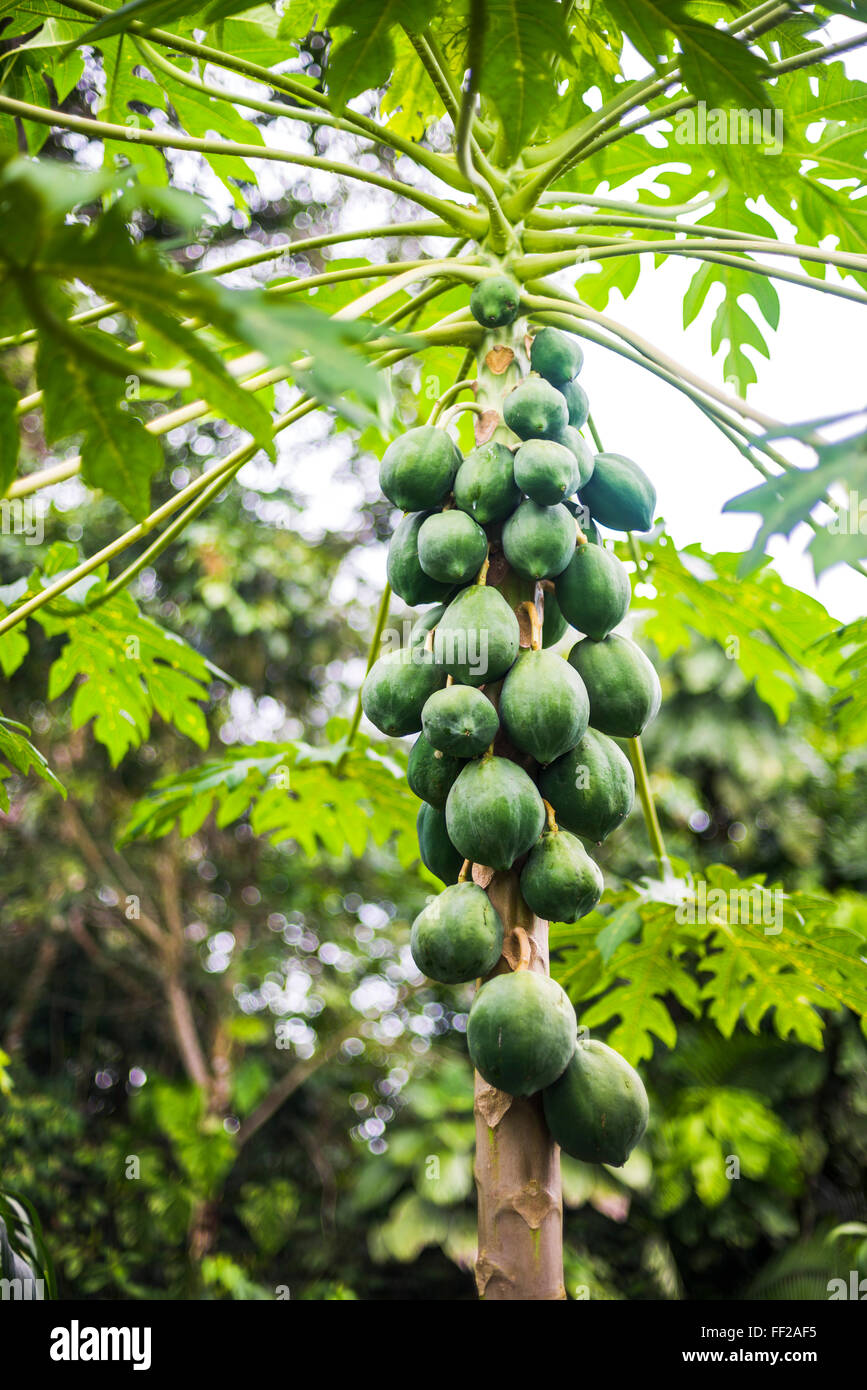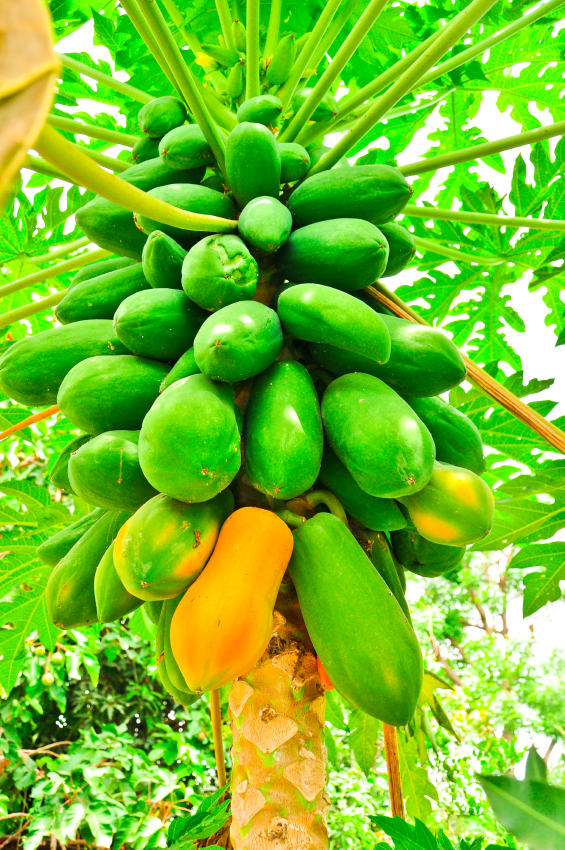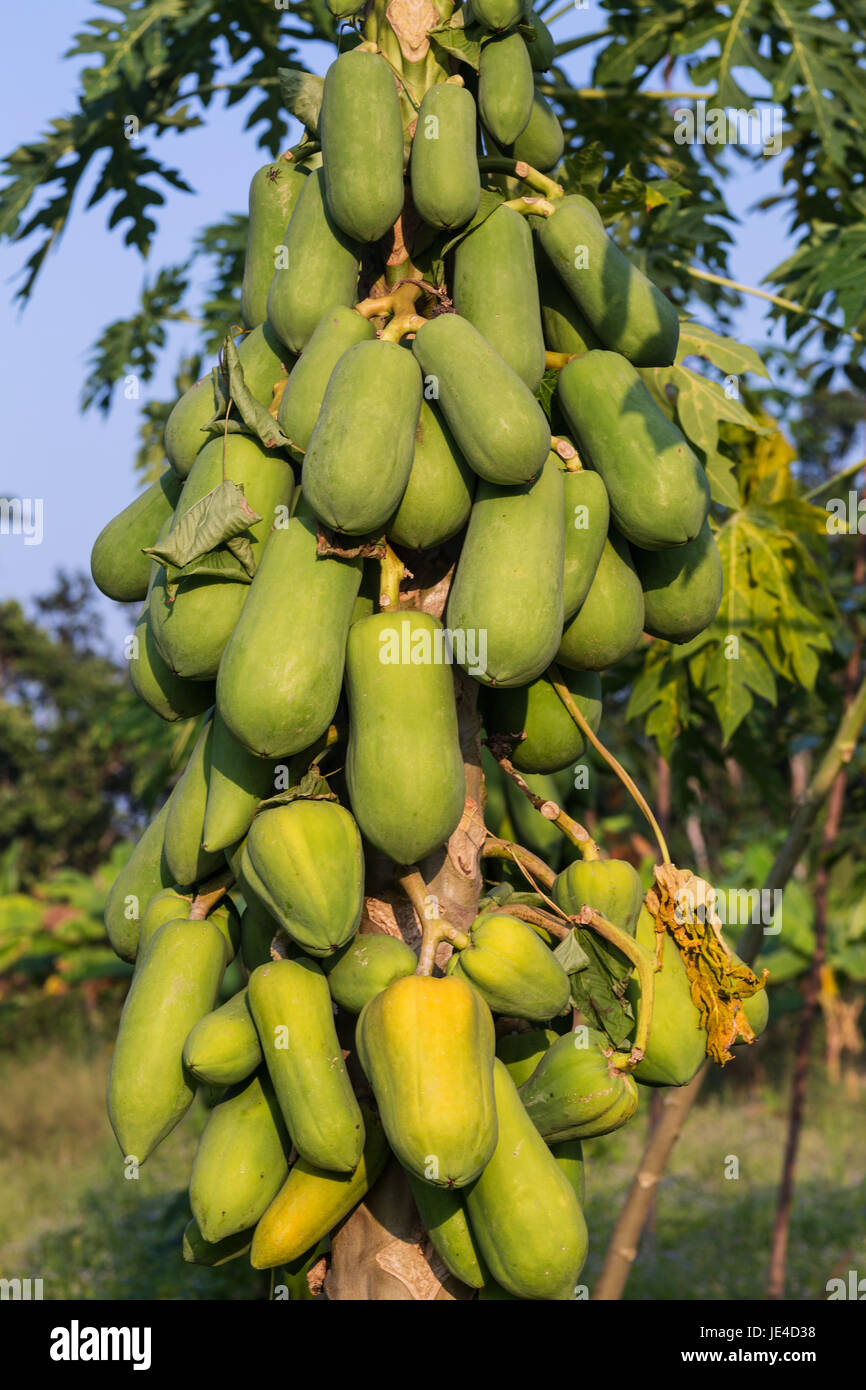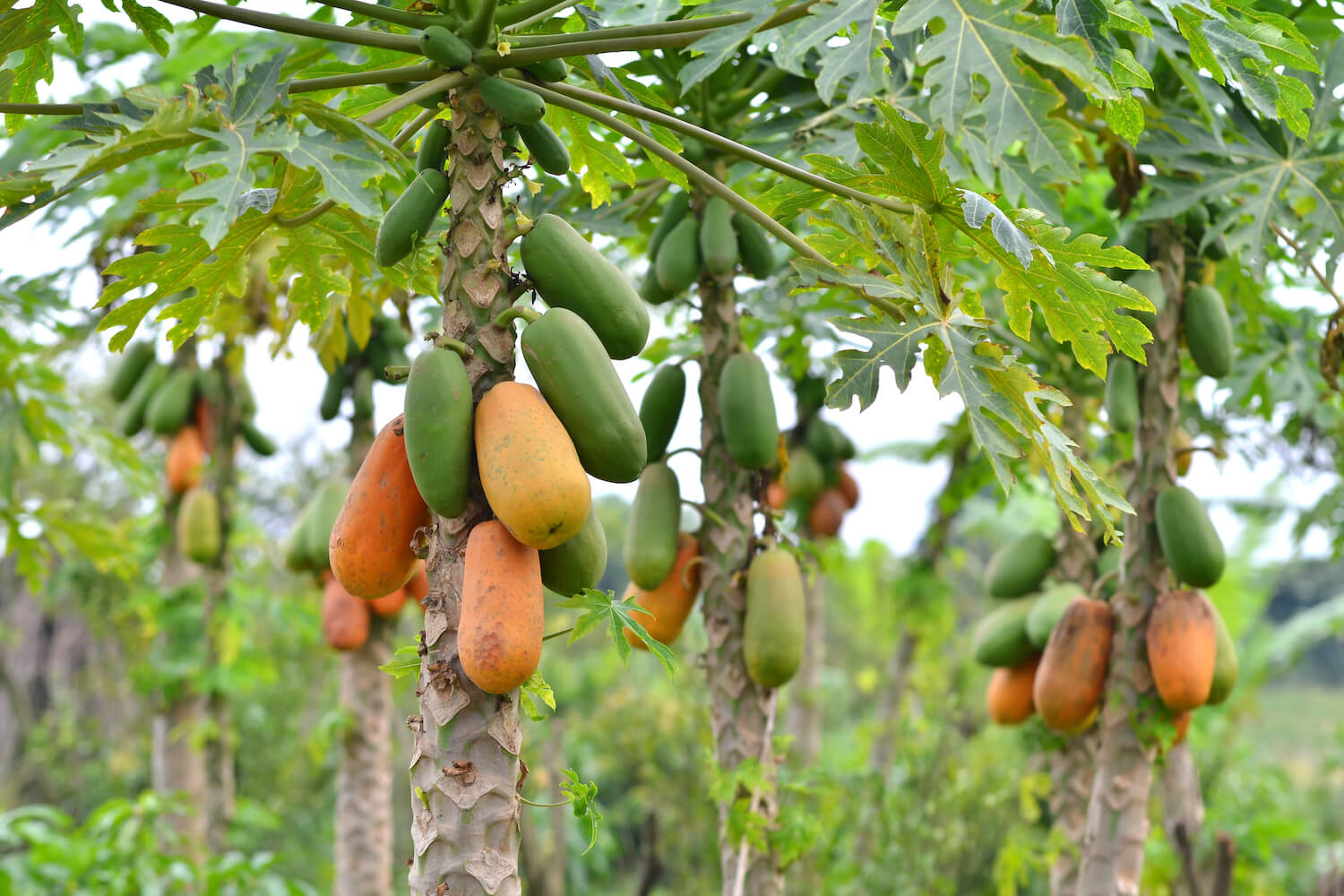
Papayabaum stockfoto. Bild von wachsen, obstgarten, frucht 35466488
Combine 1/2 medium ripe papaya, yellow or strawberry (peeled, seeded, and chopped), 1/2 cup papaya nectar, 2 tablespoons rice vinegar, 1/4 cup olive oil, and several mint leaves (to taste) in a blender. Process until smooth, then transfer to a bottle or spouted container. Refrigerate unused portion in a covered container and use within 2 days.

Papaya Tree Fruits · Free photo on Pixabay
Papaya ( Carica papaya ), auch Melonenbaum oder Papayabaum genannt, ist die einzige Art der Pflanzengattung Carica innerhalb der Familie der Melonenbaumgewächse (Caricaceae). [1] [2] Die Wildform kommt vom südlichen Mexiko bis Costa Rica vor. [2] Die Kulturform ist eine wichtige tropische Nutzpflanze. [2]

Papaya Description, Cultivation, Uses, & Facts Britannica
Papaya (Carica papaya)—known as "pawpaw" in Australia and other parts of the world—belongs to the Caricaceae family.The Caricaceae family is a group of flowering plants found primarily in tropical locations, such as Central and South America and Africa, per a 2017 review published in Frontiers.Spanish invaders took seeds of this plump, juicy fruit, native to Central America, and planted.

Papayabaum stockfoto. Bild von tropisch, baum, exotisch 1984640
Benefits Nutrition Recipes Risks Papayas contain a range of nutrients, such as antioxidants and potassium. Possible health benefits of eating papaya may include reducing the risk of heart.

Papayabaum stockfoto. Bild von nave, masse, kochen, shell 25415430
Fermented Papaya Preparation (FPP) is a natural product derived from Carica papaya that has antioxidant and anti-aging effects. This article reviews the current evidence on the molecular mechanisms, clinical applications and safety of FPP in various diseases and conditions. Learn more about the potential benefits of FPP for your health and wellness.

PapayaBaum, AmazonasRegenwald, Coca, Ecuador, Südamerika
Find the deal you deserve on eBay. Discover discounts from sellers across the globe. No matter what you love, you'll find it here. Search The baum and more.

Papaya Description, Cultivation, Uses, & Facts Britannica
The papaya, or pawpaw, botanically known as Carica papaya, is a common and delicious tropical fruit, and is of economic significance in many parts of the world. It grows on a perennial tree, which.

PapayaBaum Von Unten Gesehen Stockfoto Bild von indonesien, exotisch
Category: Arts & Culture Also called: papaw or pawpaw Carica papaya, ( Carica papaya ), succulent fruit of a large plant of the family Caricaceae. Though its origin is rather obscure, the papaya may represent the fusion of two or more species of Carica native to Mexico and Central America.

Papaya züchten » So schaffen Sie die besten Bedingungen
Sunlight Give this plant full sun for six to eight hours for the best growth, or conditions as bright as you can provide. Rotate the plant from time to time to help ensure the plant grows straight and true in the pot with no leaning. Papayas are a great sunny patio plant for summer climates. Temperature and Humidity

Papaya, Baum mit tropischer Frucht in einer landwirtschaftlichen Farm
Summary The papaya is a tropical fruit high in vitamins C and A, as well as fiber and healthy plant compounds. It also contains an enzyme called papain, used to tenderize meat. 2. Has Powerful.

Papaya, Baum mit tropischer Frucht in einer landwirtschaftlichen Farm
In Australia, it's called a pawpaw. In southern Asia, it's sometimes called a kepaya, lapaya, or tapaya. Its name in French is sometimes "figueir des iles," or fig of the islands. Some Spanish.

Papayabaum stockfoto. Bild von indonesien, blatt, bild 33361910
Potentially Protects the Heart. Papaya contains vitamin C, potassium, antioxidants, and fiber, which helps keep your arteries healthy and promotes blood flow. This can also lower cholesterol and.

PapayaBaum Von Unten Gesehen Stockbild Bild von javaner, ernte
Steckbrief Wuchstyp Staude Wuchshöhe von 200 cm bis 300 cm Wuchseigenschaften aufrecht locker Blütenfarbe gelb Mehr anzeigen Herkunft Die Papaya-Pflanze - man nennt sie auch Echte Papaya oder Baummelone - stammt ursprünglich aus Mittelamerika und wurde dort lange vor der Ankunft von Seefahrern aus der Alten Welt kultiviert.

Papaya sow, grow & harvest papaya at home Plantura
Better yet, buy a papaya that has reached peak color and is not bruised. The best way to tell if a papaya is ripe is by its scent. A ripe papaya smells richly good and slightly musky. When ripe, a papaya is soft, at which point you slice, scoop out the seeds, and inhale a spoonful.

Papaya Baum Stockfotos und bilder Kaufen Alamy
Calories: 62 Fat: 0.4g Sodium: 11.6mg Carbohydrates: 16g Fiber: 2.5g Sugars: 11g Protein: 0.7g Vitamin A: 68.2mcg Vitamin C: 88.3mg Potassium: 263.9mg Folate: 53.7mcg Beta carotene: 397.3mcg Lycopene: 2650.6mcg Carbs

Papayabaum stockfoto. Bild von grün, frucht, frech, draußen 2709106
It is a fruit that is enjoyed by people all over the world, and it is a fruit that is easy to grow. Grow papaya in tropical and subtropical regions. Papaya is an evergreen tree that grows 8 to 30 feet tall depending on the variety. Papayas are native to Mexico and northern South America.